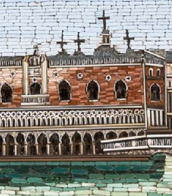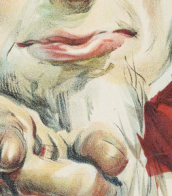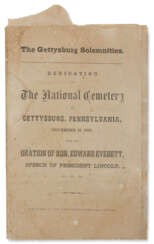newspaper

Otto Prücher was an Austrian architect and designer who worked in the Vienna Secession style.




Aleksandr Aleksandrovich Deyneka (Russian: Алекса́ндр Алекса́ндрович Дейне́ка) was a Soviet Russian artist, celebrated for his significant contribution to the world of modernist figurative painting in the first half of the 20th century. Born into a Ukrainian origin, Deyneka's artistry spanned painting, graphic design, and sculpture, leaving an indelible mark on Russian modernism. His works, characterized by vivid movement and an innovative portrayal of the Soviet lifestyle, include iconic pieces such as "The Defense of Sevastopol," "Collective Farmer on a Bicycle," and "Future Pilots," which showcase the dynamism and spirit of the Soviet era. Deyneka's commitment to Social Realism—a style aimed at the accessible portrayal of everyday life—earned him both national and international acclaim. His murals and mosaics for public buildings and metro stations in Moscow, like the Mayakovskaya station, underline his influence on the Soviet visual landscape and contribute to his legacy as a pioneer of a style that bridged European innovation with Soviet themes.
Deyneka's journey began with his education at the VHUTEMAS, where he was influenced by figures such as Mayakovsky, which shaped his approach to art as a tool for societal influence and expression. His artworks, permeated with themes of labor, sports, and a forward-looking optimism, reflect the Soviet Union's utopian ambitions and the complexities of its societal structure. Notably, Deyneka's "Mother" stands out as a powerful symbol of the Soviet woman, intertwining high social awareness with the natural role of motherhood, highlighting the artist's nuanced approach to depicting Soviet life.
Throughout his career, Deyneka remained a formidable figure in art, navigating through various artistic societies and contributing to magazines and posters that defined the visual narrative of the Soviet Union. His travels to Italy, France, and the US broadened his perspective, enriching his work with international influences while retaining his distinct stylistic identity. Deyneka's decorations for the Moscow Metro not only won prestigious awards but also immortalized his vision of Soviet progress and optimism, capturing the essence of an era poised between grand aspirations and complex realities.
For art collectors and enthusiasts of Russian modernism, Deyneka's works offer a window into the vibrancy and ideological fervor of the Soviet Union, embodying the era's aesthetic and thematic aspirations. His contributions to the public and artistic spheres underscore the role of art in shaping and reflecting societal values, making his oeuvre a vital point of study for anyone interested in the intersections of art, history, and society.
To stay informed about exhibitions and auctions featuring Aleksandr Aleksandrovich Deyneka's work, sign up for updates. This subscription ensures you're always in the know about new sales and events related to this iconic artist, allowing you to deepen your appreciation and possibly enhance your collection.


Abraham Lincoln was an American statesman and politician, the 16th President of the United States (March 4, 1861 - April 15, 1865).
The son of a frontiersman and a Kentucky farmer, Lincoln worked hard from an early age and struggled to learn. He was a militiaman in the Indian War, practiced law, and sat in the Illinois legislature for eight years. He was an opponent of slavery and gradually gained a national reputation that earned him victory in the 1860 presidential election.
After becoming the 16th president of the United States, Abraham Lincoln turned the Republican Party into a strong national organization. In addition, he drew most Northern Democrats to the Union side. On January 1, 1863, he issued the Emancipation Proclamation, which declared permanently free those slaves who were in Confederate territory. Lincoln considered secession illegal and was prepared to use force to defend federal law and the Union. Four more slave states joined the Confederacy, but four remained in the Union, and the Civil War of 1861-1865 began.
Lincoln personally directed the military action that led to victory over the Confederacy. Abraham Lincoln was reelected in 1864, and on April 14, 1865, he was fatally shot at Ford's Theatre in Washington, D.C. by actor John Wilkes Booth.
Abraham Lincoln is a national hero of the American people, he is considered one of the best and most famous presidents of the United States until today.


Abraham Lincoln was an American statesman and politician, the 16th President of the United States (March 4, 1861 - April 15, 1865).
The son of a frontiersman and a Kentucky farmer, Lincoln worked hard from an early age and struggled to learn. He was a militiaman in the Indian War, practiced law, and sat in the Illinois legislature for eight years. He was an opponent of slavery and gradually gained a national reputation that earned him victory in the 1860 presidential election.
After becoming the 16th president of the United States, Abraham Lincoln turned the Republican Party into a strong national organization. In addition, he drew most Northern Democrats to the Union side. On January 1, 1863, he issued the Emancipation Proclamation, which declared permanently free those slaves who were in Confederate territory. Lincoln considered secession illegal and was prepared to use force to defend federal law and the Union. Four more slave states joined the Confederacy, but four remained in the Union, and the Civil War of 1861-1865 began.
Lincoln personally directed the military action that led to victory over the Confederacy. Abraham Lincoln was reelected in 1864, and on April 14, 1865, he was fatally shot at Ford's Theatre in Washington, D.C. by actor John Wilkes Booth.
Abraham Lincoln is a national hero of the American people, he is considered one of the best and most famous presidents of the United States until today.




Philip Morin Freneau was an American publicist, editor, and known as the "poet of the American Revolution".
After graduating from Princeton University, Freneau taught school and studied to become a minister. With the outbreak of the American Revolution, he began writing scathing satire on the British and the Tories. During a two-year voyage to the Caribbean islands, he created the poems "The Beauties of Santa Cruz" and "The House of Night," and in 1778 he became involved in the war. After his release from British captivity, Freneau wrote a book in verse, "The British Prison Ship" (1781).
After serving as a sea captain for several years, Freneau took up journalism. In his National Gazette newspaper in Philadelphia, he sharply criticized George Washington.
Freneau's poetry, which accompanied him throughout his life, covers a variety of subjects, including political situations, American Indians, nature, the sea, and naval battles. His political poems are often satirical, but his nature poems are very lyrical.
































































![[TOFT, Mary (c.1703-1763)]](/assets/image/picture_5108857/0a548/8f614f9112b9d09c882d5f7b50ca63a81765321200jpg__fix_374_244.jpeg)
![[TOFT, Mary (c.1703-1763)]](https://veryimportantlot.com/assets/image/picture_5108857/0a548/8f614f9112b9d09c882d5f7b50ca63a81765321200jpg__fix_374_244.jpeg)


![[RISORGIMENTO] - Lotto di due rari giornali Veneziani: Sior Antonio Rioba. Venezia: Giustinian, 1848 [E:] San Marco, giornale politico. Venezia: Canal, Piermartini, 1848-49.](/assets/image/picture_1242208/f4dab/b3-vzfbjo3xtx87bsing1avbjyd4dasrkdojesngksvbyb00onl5xx9i1h3vruos1608650265jpg__fix_374_244.jpeg)
![[RISORGIMENTO] - Lotto di due rari giornali Veneziani: Sior Antonio Rioba. Venezia: Giustinian, 1848 [E:] San Marco, giornale politico. Venezia: Canal, Piermartini, 1848-49.](https://veryimportantlot.com/assets/image/picture_1242208/f4dab/b3-vzfbjo3xtx87bsing1avbjyd4dasrkdojesngksvbyb00onl5xx9i1h3vruos1608650265jpg__fix_374_244.jpeg)


![[GIORNALI, CARNEVALE] - RABADAN Giornale impolitico e antiletterario. Esce ogni venerdi grasso. Milan: Civelli, 1871-1895.](/assets/image/picture_1241984/a06c2/qm9jyoeyngb914iyaoajickcrajhj1vbgguwb5ykyyrlo1igx6r6ftl54bcwteq1608650265jpg__fix_374_244.jpeg)
![[GIORNALI, CARNEVALE] - RABADAN Giornale impolitico e antiletterario. Esce ogni venerdi grasso. Milan: Civelli, 1871-1895.](https://veryimportantlot.com/assets/image/picture_1241984/a06c2/qm9jyoeyngb914iyaoajickcrajhj1vbgguwb5ykyyrlo1igx6r6ftl54bcwteq1608650265jpg__fix_374_244.jpeg)
![[PRIMA GUERRA MONDIALE] - La Scintilla settimanale letterario dei prigionieri di guerra italiani in Sigmundsherberg. Eggenburg: Hofer, 1917-18.](/assets/image/picture_1242203/4cad6/2f0ybunebczj1xlikdilzli4owldhuwh5oro4sddpmucsczabmfpcihfjc1p9n1608650265jpg__fix_374_244.jpeg)
![[PRIMA GUERRA MONDIALE] - La Scintilla settimanale letterario dei prigionieri di guerra italiani in Sigmundsherberg. Eggenburg: Hofer, 1917-18.](https://veryimportantlot.com/assets/image/picture_1242203/4cad6/2f0ybunebczj1xlikdilzli4owldhuwh5oro4sddpmucsczabmfpcihfjc1p9n1608650265jpg__fix_374_244.jpeg)